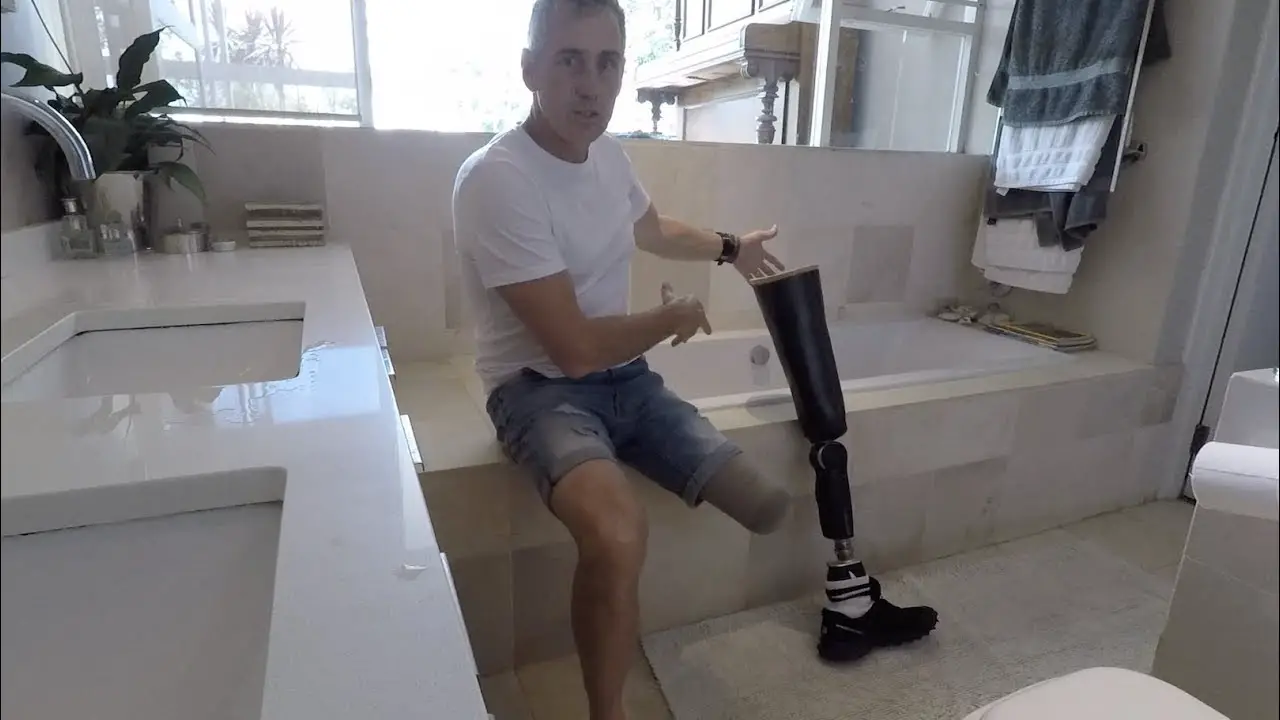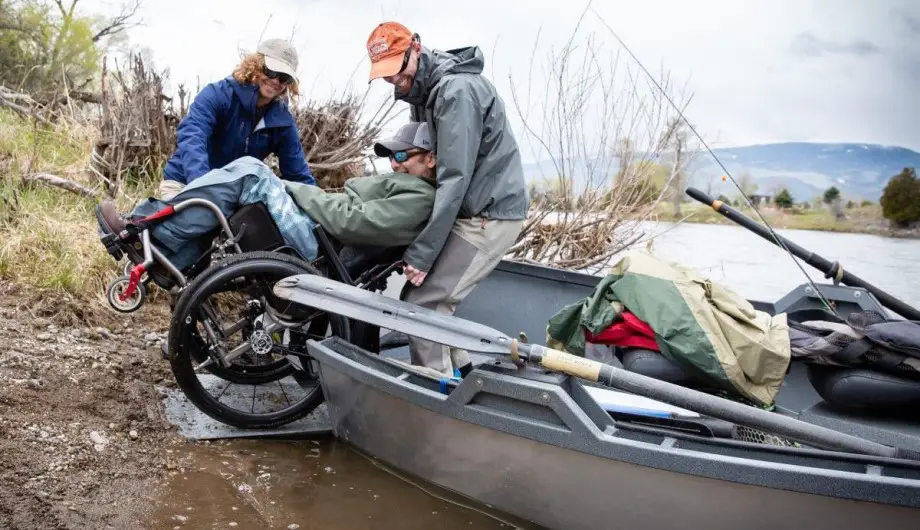Being an amputee is an entirely new life experience that you should adapt to.
The activities you normally do before the amputation can now become taxing and quite arduous to do because of your condition.
An example of such an activity is bathing or taking a shower.
Whether you’re a unilateral or bilateral amputee, the way you’ll use the shower will be quite different from how an able-bodied individual will use it.
You’ll also need to revamp your bathroom setup to enable you to have all the various accessories that will aid you in taking a shower independently.
And if you’ve been looking for the appropriate guide that will give you adequate information about how to take a shower as an amputee, then you’re in the right place.
In this guide, we shall be letting you know the various equipment/accessories that you must have in your bathroom as an amputee and how you can safely and successfully take a shower.
Table of Contents
- Major Causes of Amputation
- Types of Amputation
- Rules to Know when Revamping Your Bathroom
- Things You Should Have in Your Bathroom as an Amputee
- Useful Tips for Amputees before Using the Shower
- More Shower Tips for Amputees
- How Does an Amputee Take a Shower: Step-by-Step Guide Explained
- Final Words
- How an Amputee Takes a Shower (Video)
Major Causes of Amputation
Below are some of the most common occurrences that cause amputation.
- Circulatory disorders such as diabetic foot and limbs (vasculopathy) and artery diseases
- Cancerous bones or soft tissue tumors
- Infected injuries on the limb
- Traumatic amputation (unexpected removal at the scene of the accident)
- Bone infections
- Frostbite. Also known as frostnip. This occurs when an individual is exposed to cold for a very long time
- An animal bite from infected animals
Related: How Amputees Wear Pants Easily (Step-by-Step Guide)
Types of Amputation
Aside from limbs and arms amputation, there are other types of amputation.
They are listed below.
Partial Foot Amputation
This is the removal of the lower limb.
Ankle Amputation
The removal of the lower limb at the ankle joint.
Trans-Femoral Amputation
The removal of the lower limb between the hip joint and the knee joint. It is also referred to as an above-the-knee amputation.
Trans-Tibial Amputation
This is referred to as the below-knee amputation.
Trans-Pelvic
Also known as hindquarter amputation. It is the total removal of the whole lower limb together with all or part of the pelvis.
Hip Amputation
Removal of the lower limb at the hip joint.
Arm Amputation
It includes partial hand removal, wrist amputation, below-elbow/forearm amputation, elbow, and shoulder removal.
Rules to Know when Revamping Your Bathroom

Before you revamp your bathroom to suit your needs as an amputee, you have to keep the GAP rule in mind.
Following this rule will help you to get everything you need with minimum effort and maximum safety.
GAP is an acronym for Grip, Accessibility, and Positioning. They are explained below.
Grip
This simply implies that you must make provision for support in your bathroom to enable you to easily move around without slipping.
Accessibility
Endeavor to make everything you’ll be needing in your bathroom reachable.
Positioning
This involves positioning your bathroom in a place that is in proximity to where you’ll get the things you need after using the bathroom.
Related: Is an Amputee Considered Disabled? (Answered)
Things You Should Have in Your Bathroom as an Amputee
Plastic shower chair/bench
This is a must-have for every amputee. Standing while taking a shower can be really stressful, especially if you are a bilateral amputee.
Having a shower chair or bench in your bathroom helps to guarantee your safety and makes you comfortable when taking a shower.
You can place the chair underneath or close to your shower to enable you to have an enjoyable showering experience.
Make sure that the shower chair is nice and adjustable so that you can adjust it to your height.
After adjusting the chair, ensure that it’s stable and sturdy to guarantee your safety when you sit on it.
Extendable hand-held shower head
A hand-held showerhead will help to save you the stress of standing while using the shower.
It will allow you to sit in your shower chair and take a good shower without worrying about water not reaching some parts of your body.
Safety handles/handrail
This is another important accessory that must be installed in your bathroom.
Most domestic accidents that happen to amputees are usually a result of the bathroom’s slippery floor.
Having a sturdy safety rail or handle installed in strategic places or corners of your bathroom will help to provide you with adequate support and prevent you from slipping before or after showering.
Simple chair
Apart from the shower chair, you can keep a simple chair outside your bathroom or bathtub.
It will be useful when you want to come out of the shower or dress up.
Towel holder
Your towel must be within arm’s reach at all times when using the shower.
So, endeavor to install a towel handle in your bathroom. It should be installed in a place that will make you effortlessly reach it whenever you need to use the towel.
Squeegee
Showering can result in you having a messy and slippery floor.
A squeegee is highly necessary to help you dry your bathroom floor after usage.
Therefore, endeavor to have this equipment in your bathroom at all times.
Related: How to Transfer a Bilateral Amputee (Step-by-Step Guide)
Useful Tips for Amputees before Using the Shower

Get everything ready
Ensure that everything you need is within your reach, including the clothes you’ll wear after showering.
Call for help when you need it
Don’t hesitate to call for help if you need anything before or after entering the shower.
As a matter of fact, a bilateral amputee will need the help of an assistant or caregiver to use the bathroom, especially if they don’t have prosthetics.
Also, if both arms are amputated, you’ll need your assistant to help you shower if you are unable to use your feet to do things.
Don’t shower with your mobility aid
Since most prosthetics or mobility aids are made of metal, they might likely rust if you continue to shower with them.
Therefore, simply remove your prosthetics or crutches before entering the bathroom.
More Shower Tips for Amputees
- Fix a body and back scrubber on the wall to allow effective washing of the body
- Keep shampoos, liquid soap, and conditioners closer for easy grabbing
- Place the shower switch closer to where it can easily be reach
- It’s recommended to get a tornado body dryer. Using a towel can be stressful
- Safety is the most important factor after amputation
- If there are cases of any open wound on the affected limb, avoid getting water or soap on it
- Make sure to visit your doctor frequently
How Does an Amputee Take a Shower: Step-by-Step Guide Explained

When using a bathtub
Step 1
Move gently towards the tub and sit at the edge of the tub.
Step 2
Once you have everything set in the tub, remove your prosthetics or crutches and set them aside in a place where you can easily reach them after showering.
Step 3
Move from the edge of your bathtub into the tub and carefully sit in your plastic shower chair. Use your handrail during this movement process to guarantee your safety.
Step 4
Once you are comfortably seated in your chair, turn on the shower and begin to take your bath.
When using the bathroom
If you don’t have a tub, below is how you can take a shower in your bathroom.
Step 1
After entering the bathroom and sitting in your shower chair, remove your mobility devices and put them outside the bathroom in a corner where you can easily reach them after showering.
If you are wheelchair-bound, allow your assistant or caregiver to help you with sitting on your shower chair and out of the bathroom after showering.
Step 2
Ensure that you are seated comfortably, take the extendable hand-held shower head, and begin to shower.
Note: If you’re a unilateral amputee who doesn’t have an extendable hand-held shower head and doesn’t enjoy sitting down while taking a shower, you can simply stand by resting your amputated leg on your shower stool, then take your shower.
Use one of your hands to hold on to a handrail for support if you don’t feel comfortable.
However, if you are a bilateral amputee without a hand-held shower head, simply fetch water in a bucket and use a small bowl to scoop water from the bucket to have your shower while sitting.
Final Words
Having the arm or leg surgically removed due to an accident, medical illness, or trauma is a tough experience.
It comes with several challenges.
Being an amputee makes you see life from another perspective. It makes you challenge yourself to be a better version of yourself.
You’ll need to re-learn a lot of your usual daily activities like taking a shower.



